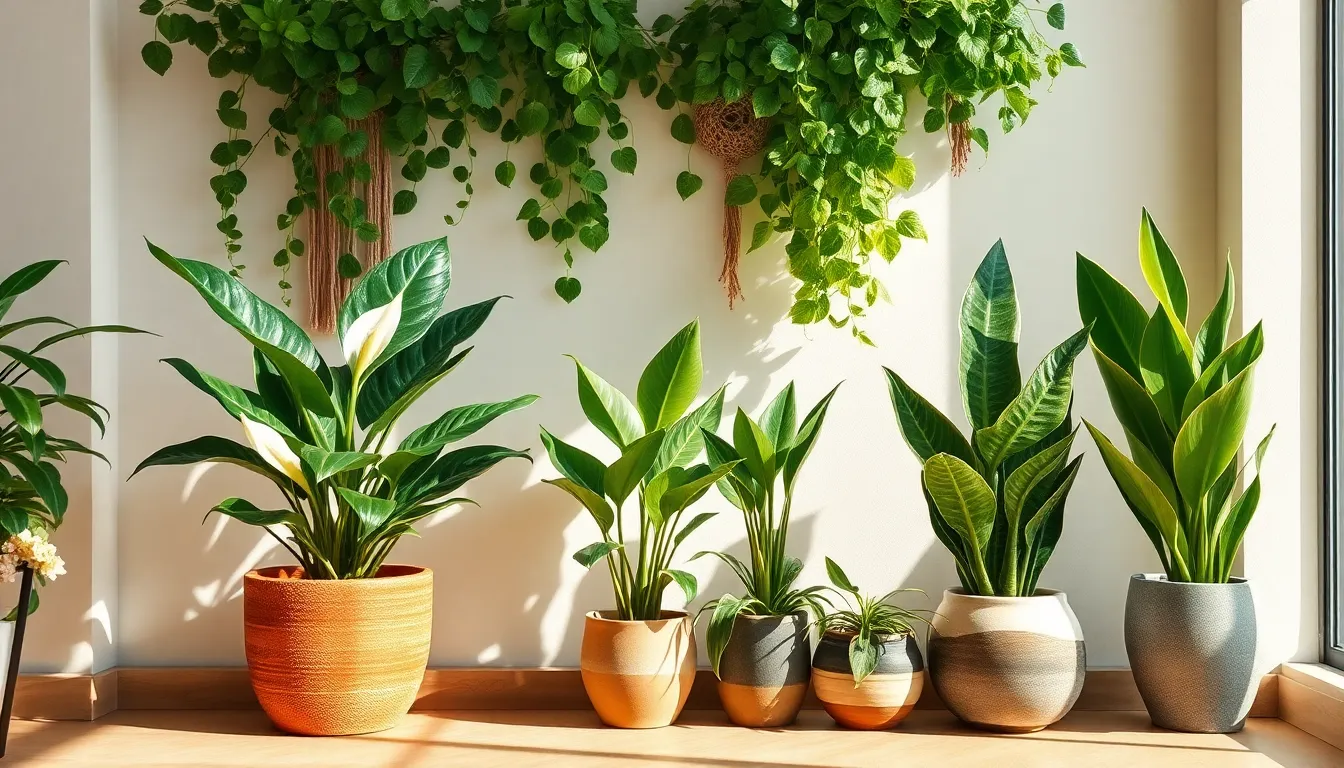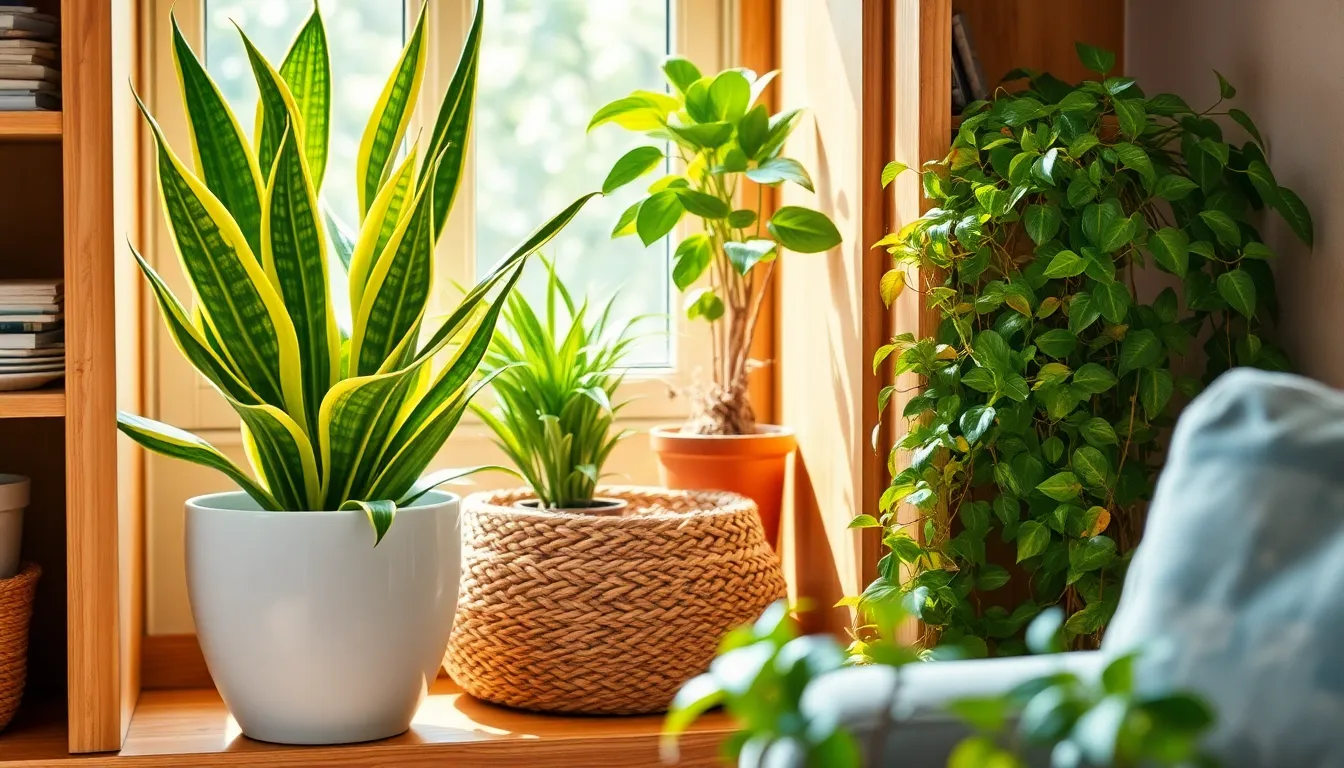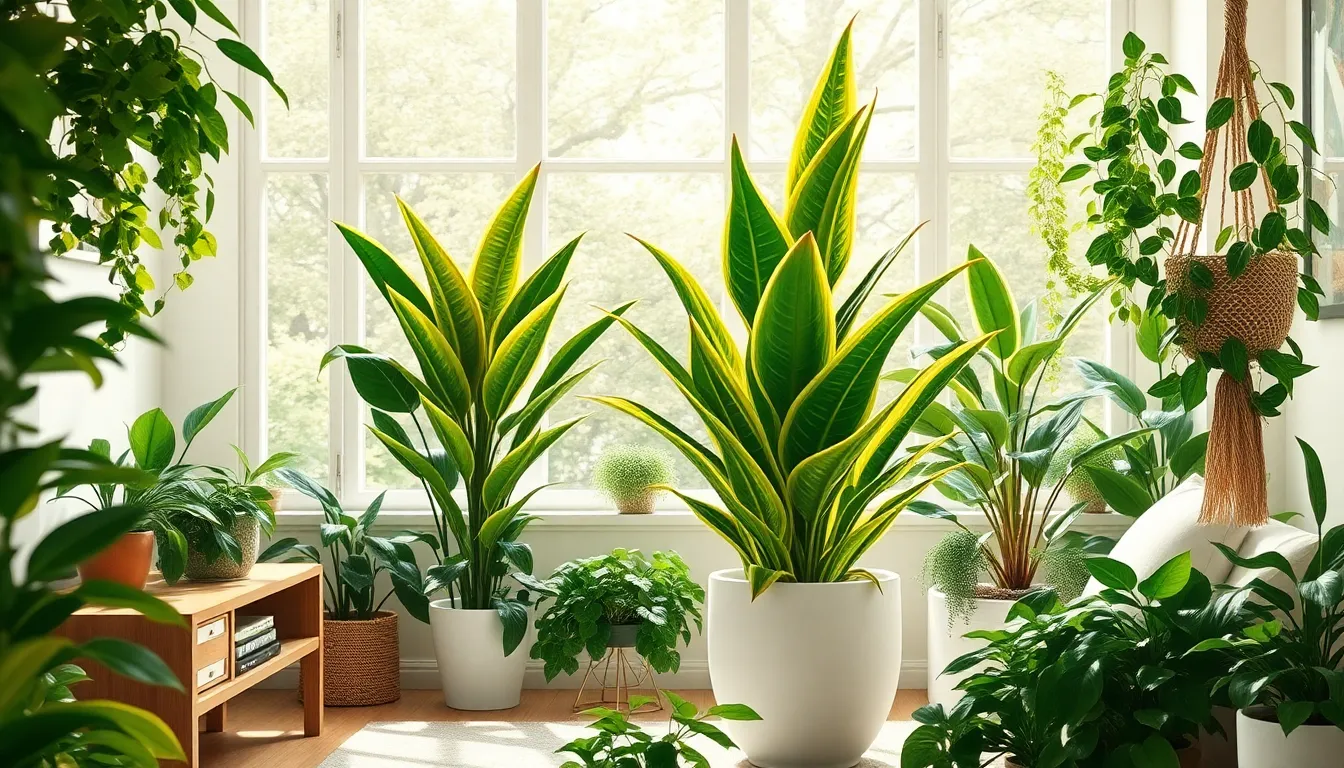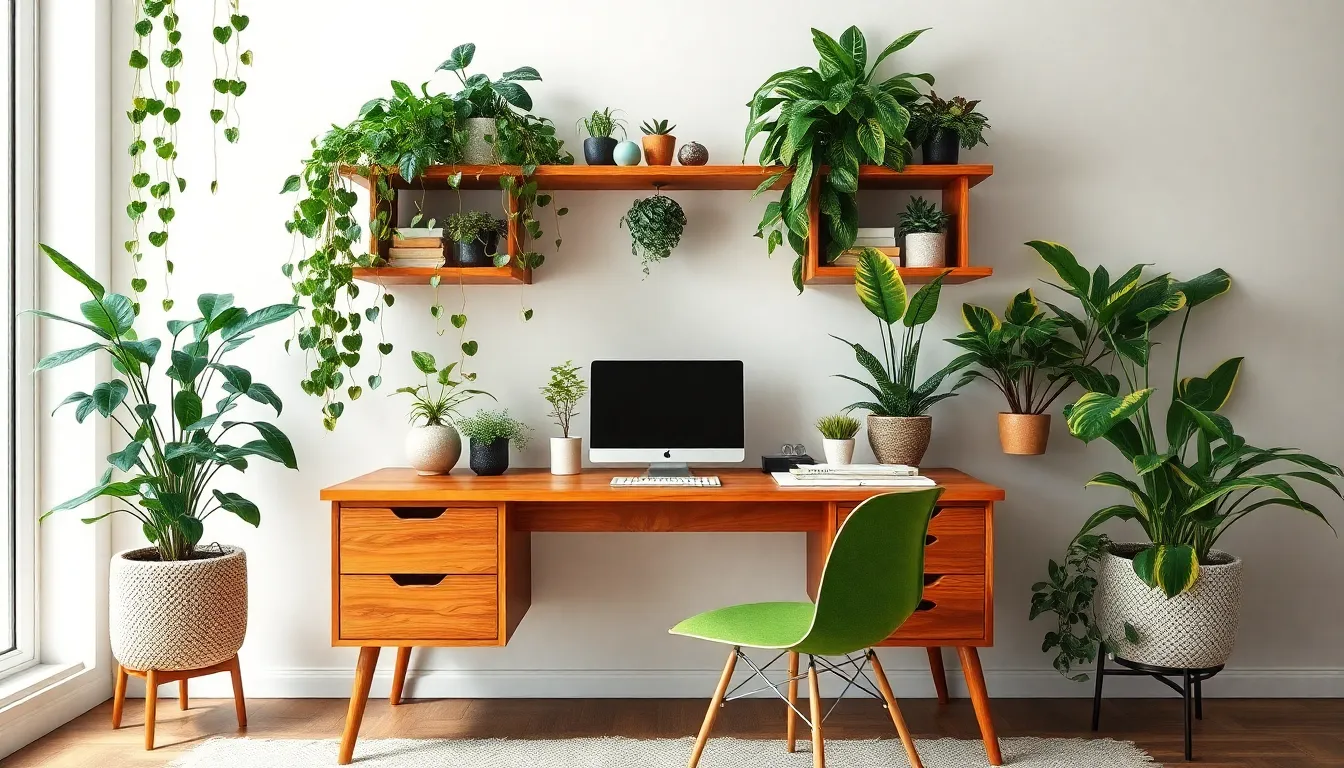Welcome to a world where greenery meets health, transforming your home into a sanctuary of fresh air and vibrant life. Whether you’re just beginning your gardening journey or have cultivated lush indoor jungles, this guide is your key to unlocking the dual joys of nurturing plants and enhancing your living space with cleaner air. Here, we celebrate the simple pleasure of watching plants thrive while they silently work to improve your environment.
Imagine stepping into a room where every breath feels refreshing, thanks to the natural air-purifying magic of plants. This carefully curated list of indoor plants not only beautifies your home but also actively cleans the air, offering practical benefits that go beyond aesthetics. With each plant, you’ll find tips tailored to ensure your success, making it easy for anyone to cultivate a healthier, happier home.
Get ready to embark on a rewarding horticultural adventure that promises more than just decorative charm. By choosing the right plants, you’re investing in a sustainable lifestyle that brings nature’s wonders indoors, empowering you to create a space where you and your plants can flourish together. With our guide, you’ll feel confident in your ability to nurture these green companions, knowing that every leaf contributes to a healthier home atmosphere.
Spider Plant (Chlorophytum comosum)
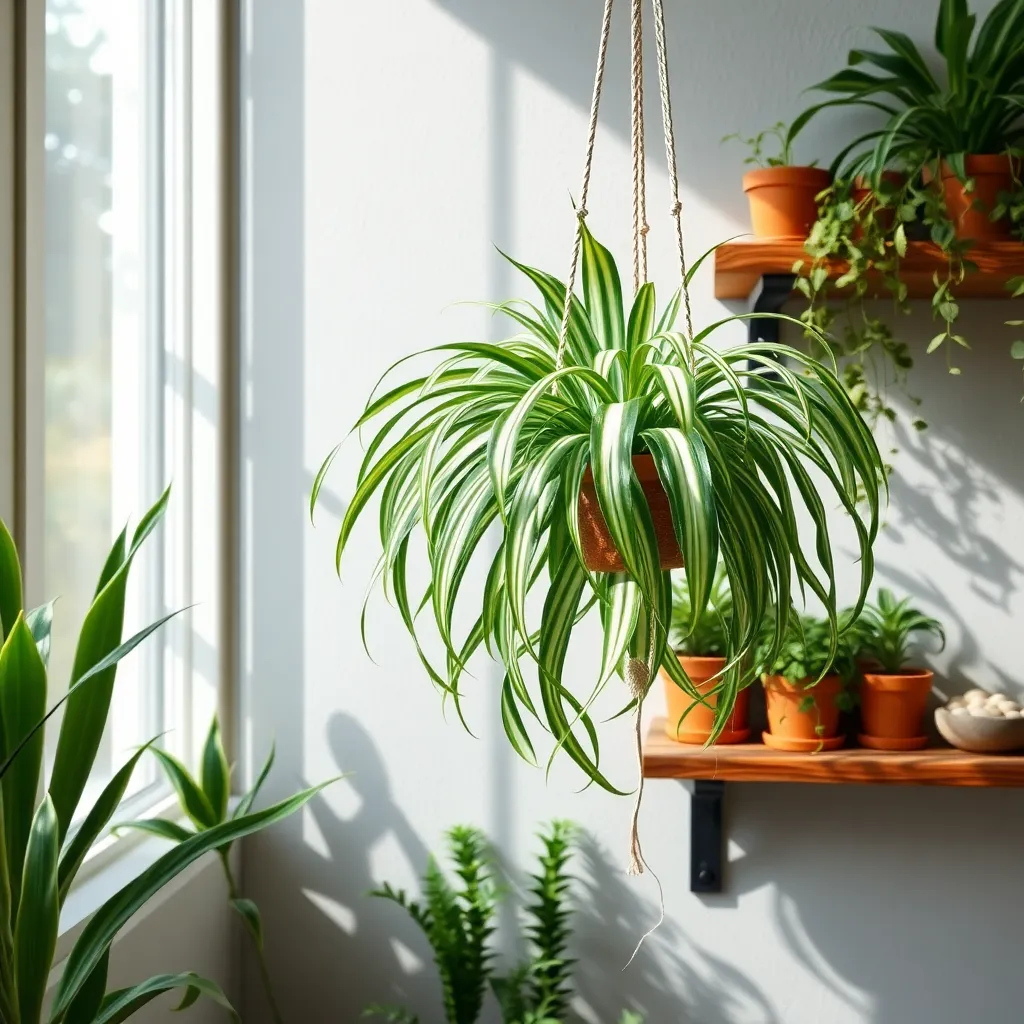
The Spider Plant, or Chlorophytum comosum, is a popular choice for improving indoor air quality. It’s known for its ability to remove pollutants like formaldehyde and xylene from the air, making it a healthy addition to any home.
To keep your Spider Plant thriving, place it in a spot with bright, indirect sunlight. Direct sunlight can scorch its leaves, so it’s ideal to position it near a window where it receives filtered light.
Spider Plants prefer well-draining soil, such as a general-purpose potting mix combined with a bit of perlite. This combination ensures that the roots do not sit in water, preventing root rot, which is a common issue with overwatering.
Water your Spider Plant when the top inch of soil feels dry to the touch. In general, they enjoy a thorough watering about once a week, but frequency may vary with humidity and temperature changes.
For advanced care, fertilize your Spider Plant with a liquid houseplant fertilizer every couple of months during the growing season. This will encourage lush growth and the production of “pups,” or baby plants, which can be easily propagated.
Regularly inspect your Spider Plant for pests like spider mites or aphids, which can be managed with a gentle spray of water or insecticidal soap. Keeping the leaves clean by wiping them with a damp cloth also helps maintain their health and appearance.
Peace Lily (Spathiphyllum wallisii)
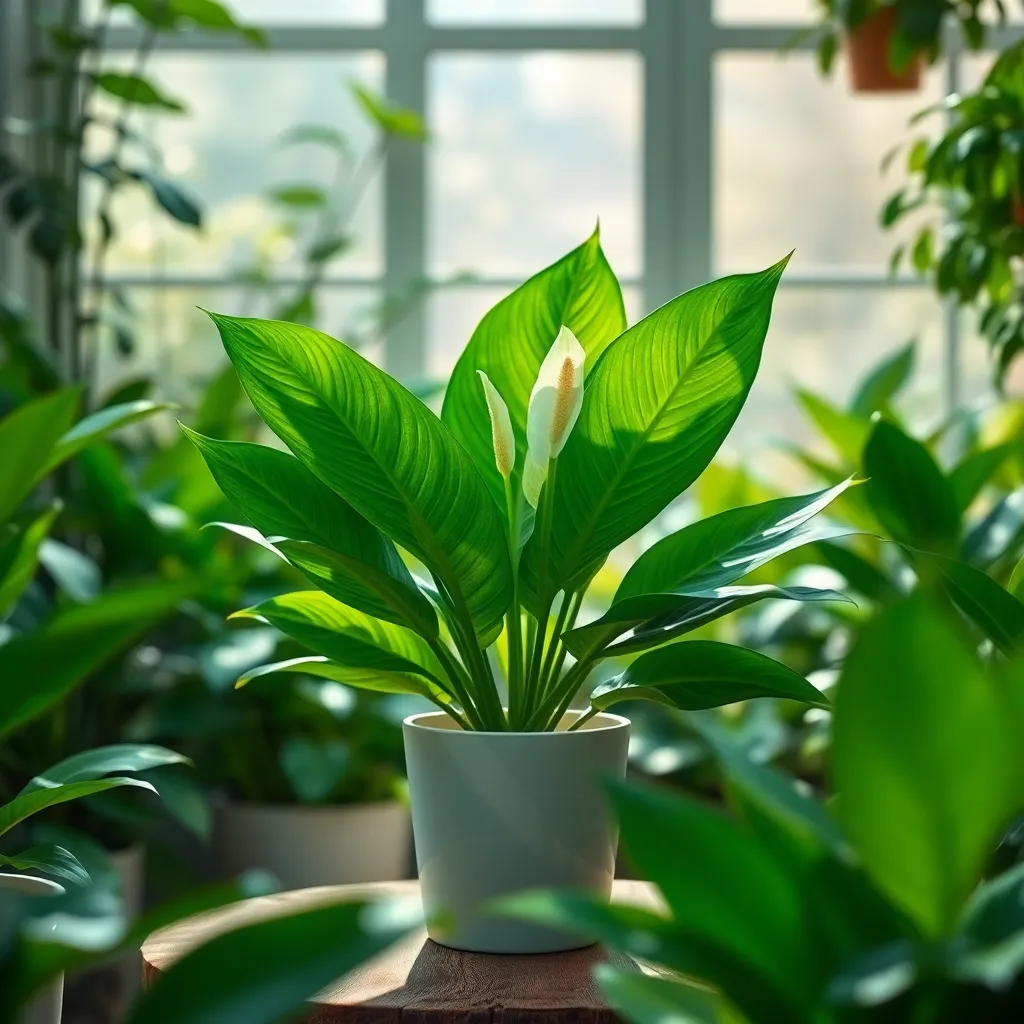
Peace Lily (Spathiphyllum wallisii) is a popular choice for improving indoor air quality, thanks to its ability to filter toxins like formaldehyde and benzene. These plants are also known for their striking white blooms and lush green leaves, which add a touch of elegance to any room.
To ensure optimal growth, place your Peace Lily in an area with indirect light; direct sunlight can scorch its leaves. If natural light is limited, consider using a full-spectrum fluorescent light to mimic sunlight and promote healthy growth.
Water your Peace Lily when the top inch of soil feels dry to the touch. Overwatering can lead to root rot, so it’s best to use a well-draining potting mix and ensure the pot has drainage holes.
For those with more experience, consider misting the leaves regularly to maintain humidity, which these tropical plants thrive in. Feeding your Peace Lily with a balanced liquid fertilizer every 6-8 weeks during the growing season will support its vibrant foliage and blooms.
Boston Fern (Nephrolepis exaltata)
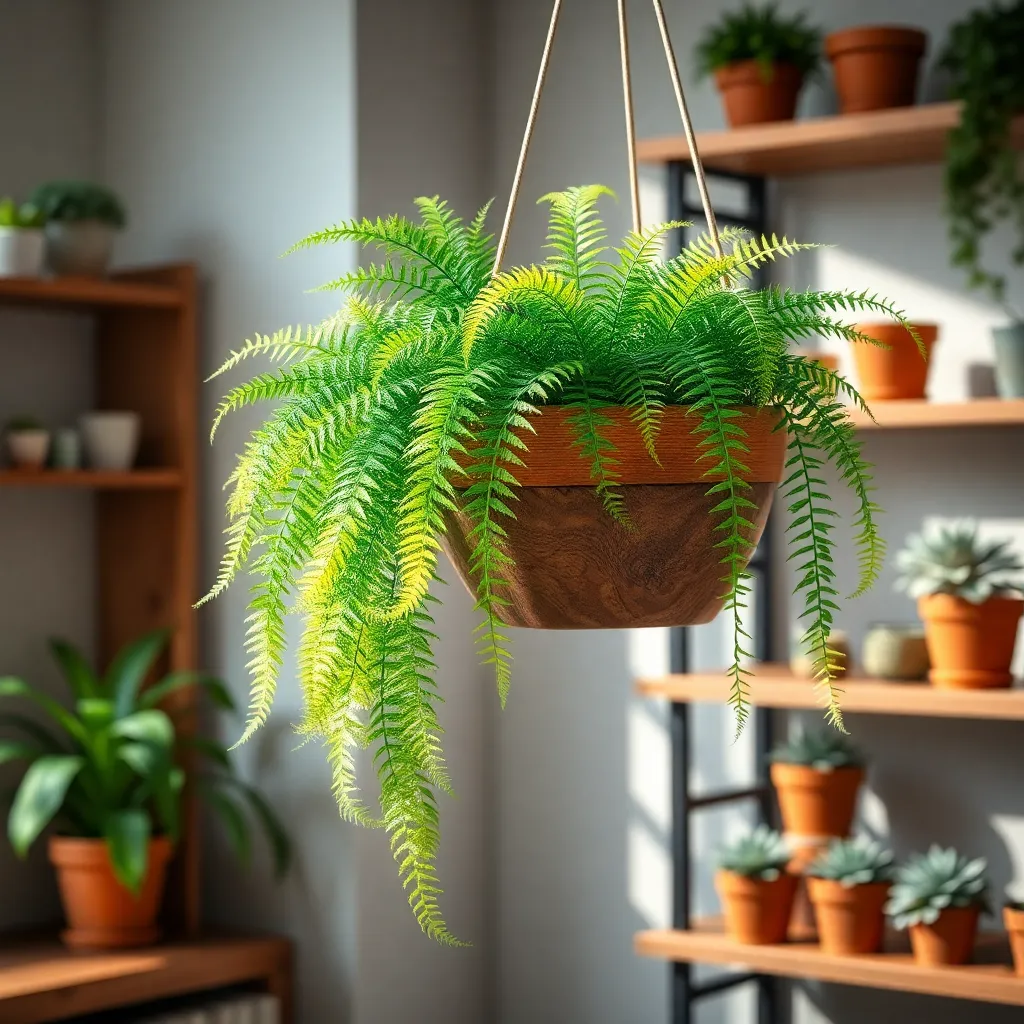
Boston Ferns, known scientifically as Nephrolepis exaltata, are excellent indoor plants for improving air quality. These lush, green ferns are particularly adept at removing pollutants such as formaldehyde from the air, making them a top choice for health-conscious gardeners.
To thrive indoors, Boston Ferns require high humidity and indirect light. It’s essential to keep the soil consistently moist but not waterlogged; watering them once a week is usually sufficient, but you may need to adjust based on your home’s humidity levels.
For optimal growth, use a soil mix rich in organic matter, such as a combination of peat moss, sand, and potting soil. Regular misting or placing a humidifier nearby can help maintain the moisture levels these ferns love.
Advanced gardeners might consider fertilizing Boston Ferns every month during the growing season with a balanced, water-soluble fertilizer. Be cautious not to over-fertilize, as this can damage the delicate roots and fronds, leading to browning and leaf drop.
Rubber Plant (Ficus elastica)
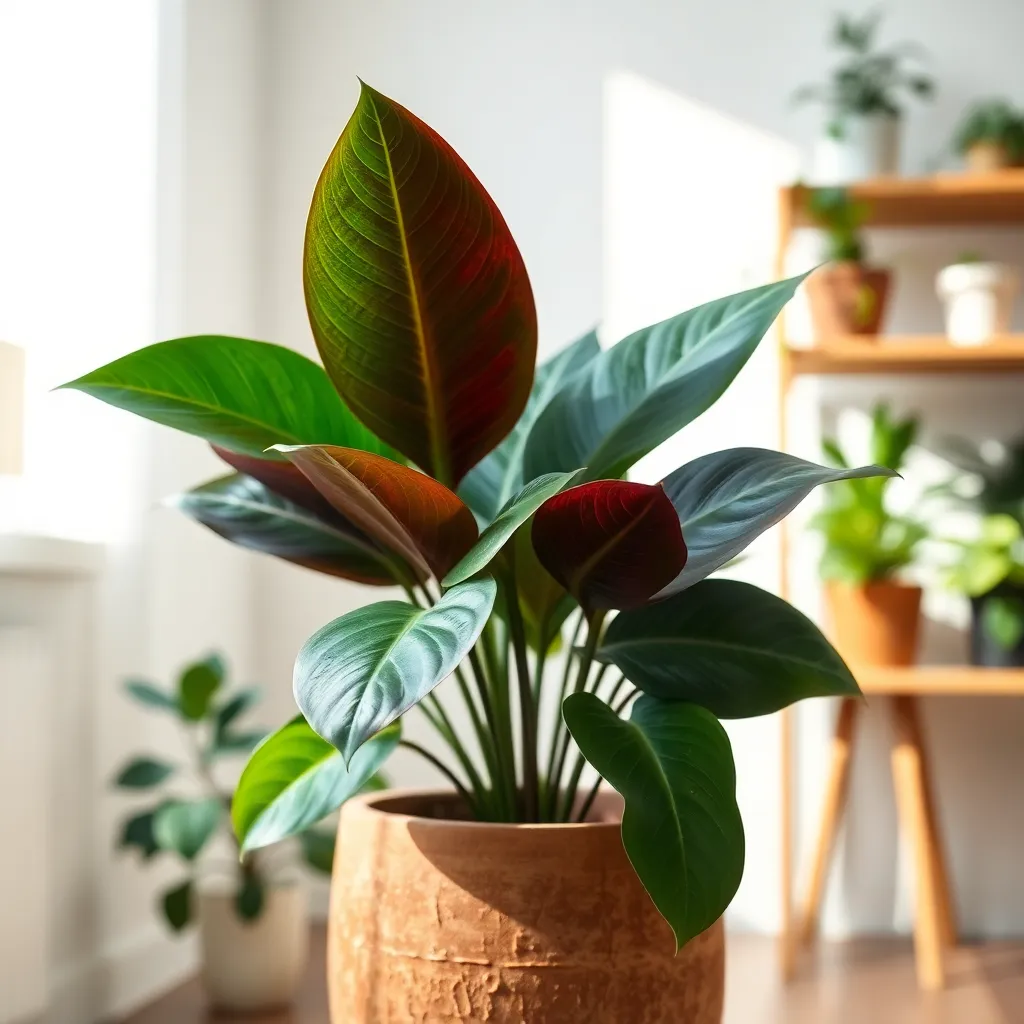
The Rubber Plant (Ficus elastica) is a popular choice for improving indoor air quality, thanks to its ability to remove toxins like formaldehyde from the air. This hardy plant is perfect for beginners, as it requires minimal care while providing a lush, green presence in your home.
To thrive, the Rubber Plant needs bright, indirect light, although it can tolerate lower light conditions for short periods. Water the plant moderately, allowing the top inch of soil to dry out between waterings to prevent root rot.
For optimal growth, use a well-draining potting mix, such as a blend of peat, pine bark, and perlite. Fertilize the plant every month during the growing season with a balanced, water-soluble fertilizer to encourage healthy leaf development.
Advanced gardeners can experiment with pruning to shape the plant and encourage bushier growth. To propagate, take a cutting with at least two leaves, dip it in rooting hormone, and plant it in moist soil.
Aloe Vera (Aloe barbadensis miller)
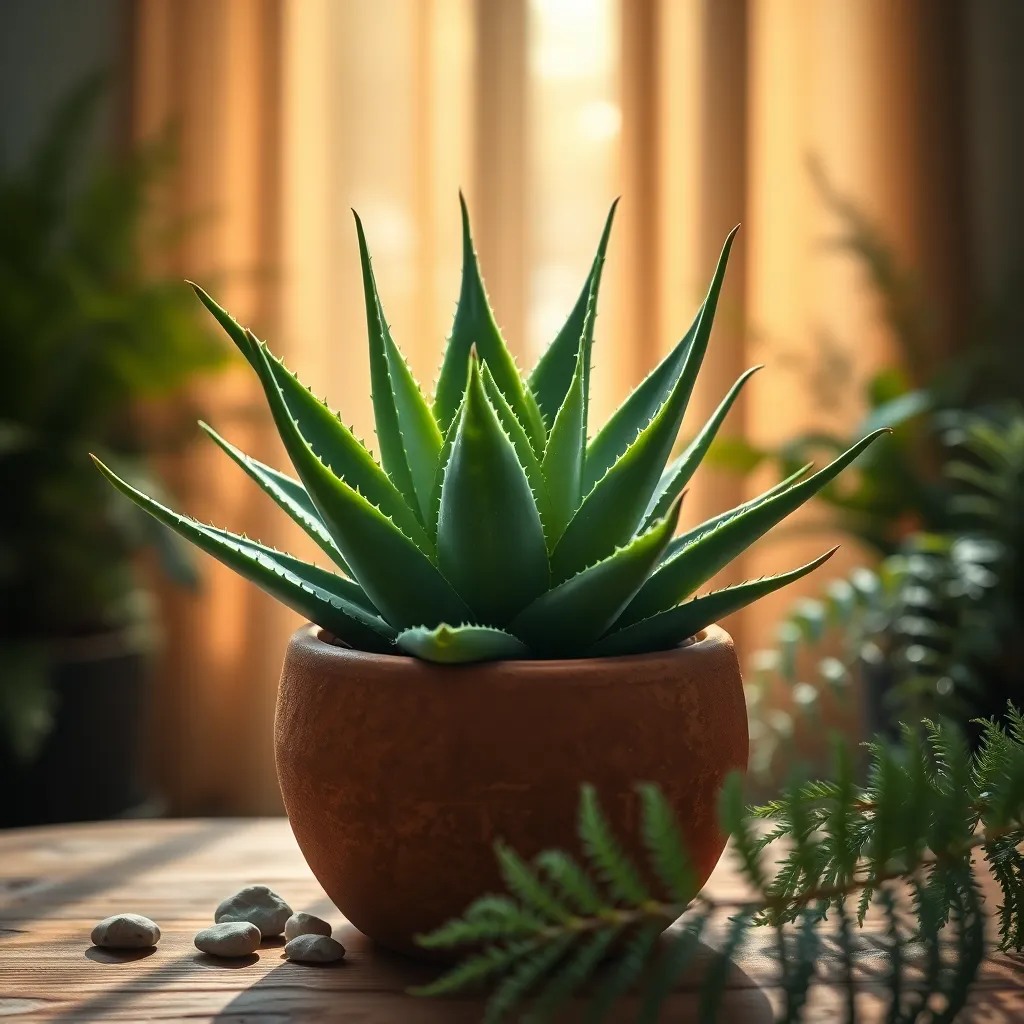
Aloe Vera (Aloe barbadensis miller) is not only a great plant for improving air quality, but it also serves as a useful addition to your home due to its medicinal properties. Known for its ability to filter formaldehyde and benzene, this succulent thrives in indoor environments with minimal care.
To ensure your Aloe Vera stays healthy, place it in a location with plenty of bright, indirect sunlight. While it can tolerate direct sunlight, too much exposure can cause the leaves to brown, so balance is key.
Watering is crucial for Aloe Vera, as overwatering can lead to root rot. Allow the soil to dry out completely between waterings, and then water deeply, ensuring excess water drains away.
For optimal growth, use a well-draining potting mix, such as a cactus or succulent blend. Repotting every couple of years will help manage root growth and refresh the soil, providing the necessary nutrients for a thriving plant.
Conclusion: Growing Success with These Plants
As we conclude our exploration of the best indoor plants for air quality, let’s reflect on the five key relationship concepts we’ve uncovered: the healing power of nature in nurturing connections, the role of shared activities like gardening in strengthening bonds, the importance of creating a healthy environment for mutual growth, the benefits of incorporating nature into your personal spaces for emotional balance, and the shared responsibility in maintaining a living space that promotes well-being.
Now, it’s time to take action. Consider selecting one plant from our list to incorporate into your home this week. Not only will it purify your air, but it will also serve as a symbol of the fresh start you are nurturing in your relationship.
Bookmark this article to revisit these concepts and ensure the lush, green reminders of your commitment are always at hand. As you embrace these natural elements, envision the blossoming of not just greenery but the continuous growth and success of your relationship. Remember, every step you take towards improving your shared environment is a step towards a thriving partnership. Let nature be your guide and ally on this beautiful journey.

